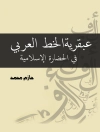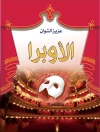A revised edition of this seminal title, surveying the diverse, ever-evolving field of contemporary African art from the 1950s to today, illustrated in color throughout.
Contemporary African art has grown out of the diverse histories and cultural heritage of the African continent and its diaspora. It is not characterized by one particular style, technique, or theme, but by a bricolage-like attitude toward art making, incorporating and building upon the structures from which older, pre- colonial and colonial genres were made.
In this revised and updated edition of Contemporary African Art, Sidney Littlefield Kasfir examines the major themes, developments, and accomplishments in African art of the twentieth and twenty-first centuries. Organized thematically, the book includes new chapters on the history of African photography and the growth of the global art market, alongside significant discussions of patronage, mediation, artistic training, and national and diaspora identities.
Generously illustrated throughout, including work by artists such as El Anatsui, Yinka Shonibare, William Kentridge, and Ibrahim El-Salahi, the book draws on interviews with many contemporary artists and art world professionals. Contemporary African Art is a fascinating, comprehensive survey of art from the African continent and its global diaspora.
Sobre o autor
Sidney Littlefield Kasfir (1939–2019) was an Associate Professor of Art History at Emory University in Atlanta and Curator of African Art at Michael C. Carlos Museum, also at Emory University. She studied Physics before embarking on Fine Arts at Harvard University and then managed the Nommo Gallery in Uganda. She completed her Ph D on African Art at the School of Oriental and African Studies, University of London, and went on to do postdoctoral research at the University of Oxford. Since 1981 she divided her time between teaching and curating in the USA and fieldwork in Nigeria, Kenya, and Uganda. She was editor of the anthology West African Masks and Cultural Systems and is working on a study of the colonial and postcolonial transformation of Idoma and Samburu art.












